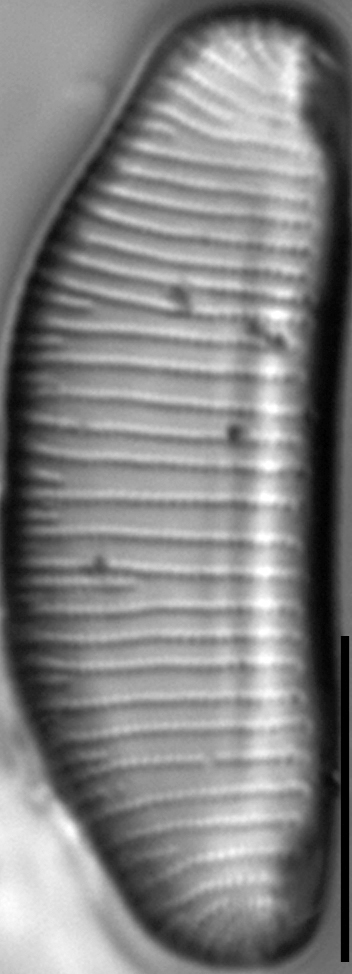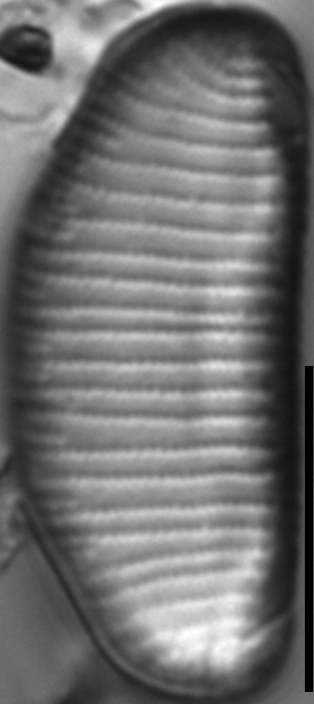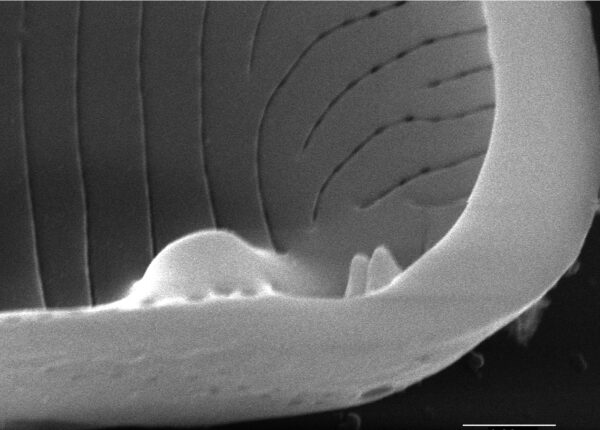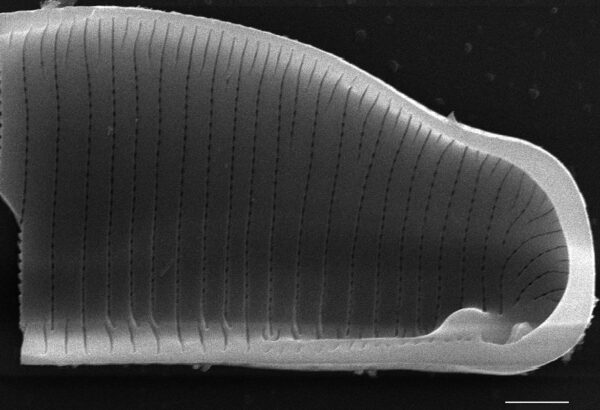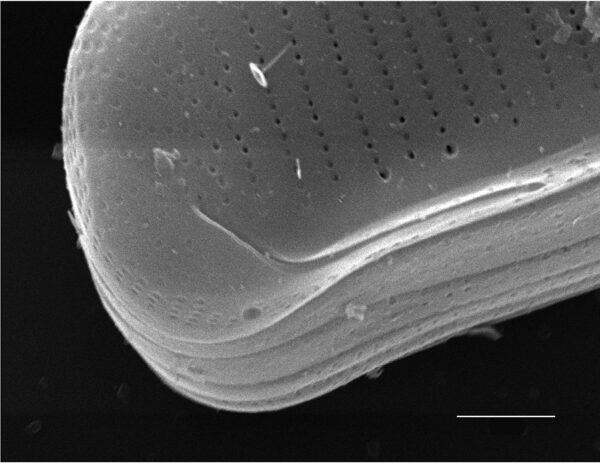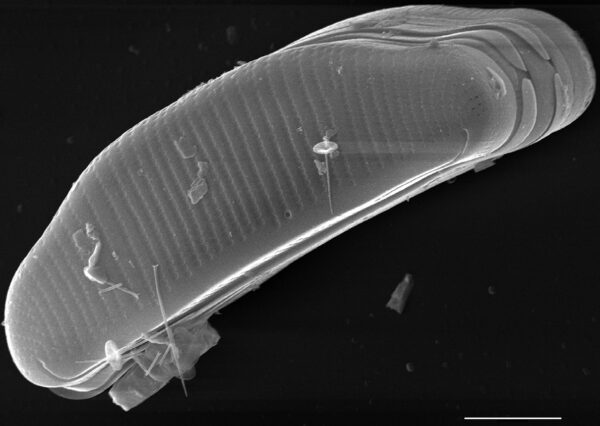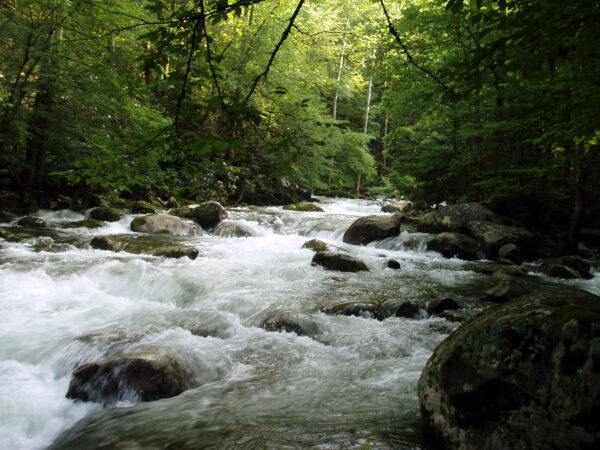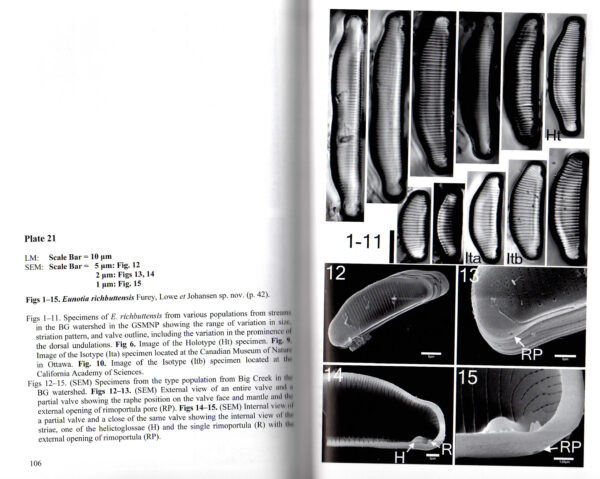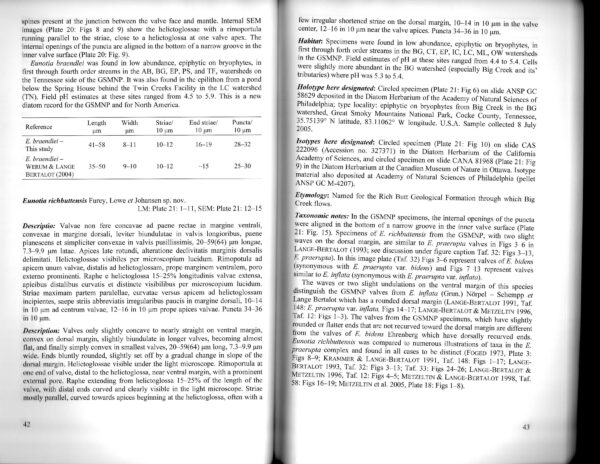Eunotia richbuttensis
-
Category
-
Length Range20-59 µm
-
Width Range7.3-9.9 µm
-
Striae in 10 µm10-14 at the center of the valve, 12-16 at the ends
-
ContributorPaula Furey - Mar 2011
-
ReviewerSam Rushforth - Apr 2011
Identification
Description
The ventral margin is only slightly concave, and often nearly straight. The dorsal margin is convex and slightly biundulate in larger valves. The dorsal margin becomes nearly flat, or even convex in the smallest valves. The ends are bluntly rounded and slightly set off by a gradual change in slope of the dorsal margin. Helictoglossae are visible under the LM. One apical rimoportula, distal to the helictoglossa is present near the ventral margin, with a prominent external pore (visible in SEM). The raphe extends from the helictoglossa (15-25% of the length of the valve), with the distal ends curved and clearly visible in the LM. Striae are mostly parallel and curve toward the apices beginning at the helictoglossa. The striae on the dorsal margin are often irregular and shortened. Areaolae within a stria are 34-36 in 10 µm. The internal openings of the areolae are aligned in the bottom of a narrow groove in the inner valve surface (SEM).
Autecology
Eunotia richbuttensis has been found in low abundance, epiphytic on bryophytes, in first through forth order streams throughout the Great Smoky Mountains National Park, especially in the Big Creek watershed.
-
Size Range, µm3
-
Motility
-
Habitat
-
Waterbody
- Learn more about this
Original Description
Valves only slightly concave to nearly straight on ventral margin, convex on dorsal margin, slightly biundulate in longer valves, becoming almost flat, and finally simply convex in smallest valves, 20 – 59 (64) μm long, 7.3 – 9.9 μm wide. Ends bluntly rounded, slightly set off by a gradual change in slope of the dorsal margin. Helictoglossae visible under the light microscope. Rimoportula at one end of valve, distal to the helictoglossa, near ventral margin, with a prominent external pore. Raphe extending from helictoglossa 15 – 25% of the length of the valve, with distal ends curved and clearly visible in the light microscope. Striae mostly parallel, curved towards apices beginning at the helictoglossa, often with a few irregular shortened striae on the dorsal margin, 10 – 14 in 10 μm in the valve center, 12 – 16 in 10 μm near the valve apices. Puncta 34 – 36 in 10 μm.
-
AuthorFurey, Lowe and Johansen 2011
-
Length Range20-59 µm
-
Width7.3-9.9 µm
-
Striae in 10µm10-14 in the center valve, 12-16 at the ends, puncta 34-36
Cite This Page
Furey, P. (2011). Eunotia richbuttensis. In Diatoms of North America. Retrieved November 17, 2024, from https://diatoms.org/species/eunotia_richbuttensis
Responses
The 15 response plots show an environmental variable (x axis) against the relative abundance (y axis) of Eunotia richbuttensis from all the stream reaches where it was present. Note that the relative abundance scale is the same on each plot. Explanation of each environmental variable and units are as follows:
ELEVATION = stream reach elevation (meters)
STRAHLER = distribution plot of the Strahler Stream Order
SLOPE = stream reach gradient (degrees)
W1_HALL = an index that is a measure of streamside (riparian) human activity that ranges from 0 - 10, with a value of 0 indicating of minimal disturbance to a value of 10 indicating severe disturbance.
PHSTVL = pH measured in a sealed syringe sample (pH units)
log_COND = log concentration of specific conductivity (µS/cm)
log_PTL = log concentration of total phosphorus (µg/L)
log_NO3 = log concentration of nitrate (µeq/L)
log_DOC = log concentration of dissolved organic carbon (mg/L)
log_SIO2 = log concentration of silicon (mg/L)
log_NA = log concentration of sodium (µeq/L)
log_HCO3 = log concentration of the bicarbonate ion (µeq/L)
EMBED = percent of the stream substrate that is embedded by sand and fine sediment
log_TURBIDITY = log of turbidity, a measure of cloudiness of water, in nephelometric turbidity units (NTU).
DISTOT = an index of total human disturbance in the watershed that ranges from 1 - 100, with a value of 0 indicating of minimal disturbance to a value of 100 indicating severe disturbance.
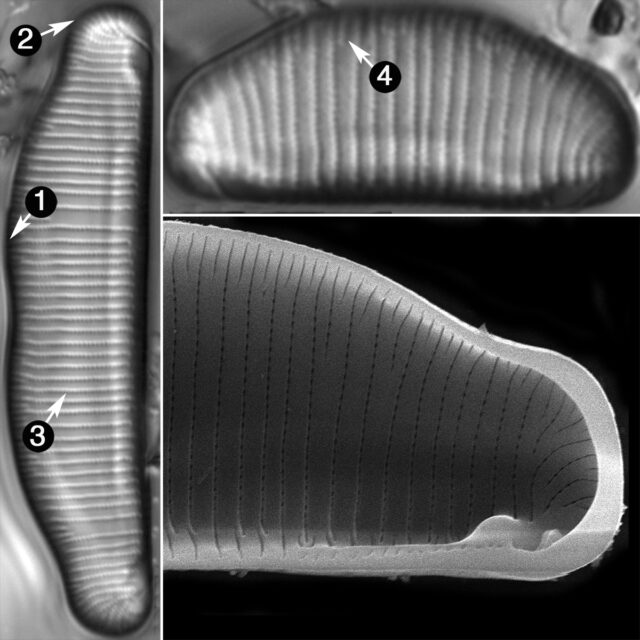
Eunotia richbuttensis
- Dorsal margin slightly biundulate
- Apices bluntly rounded
- Striae mostly parallel
- Irregular short striae on the dorsal margin
The dorsal margin is slightly biundulate in larger valves. The dorsal margin of smaller valves is almost flat. At the smallest end of the size range, the dorsal margin is convex. The valve apices are bluntly rounded and slightly “set off” by a gradual change in slope of the dorsal margin. The striae are mostly parallel and curved towards...
 Diatoms of North America
Diatoms of North America



